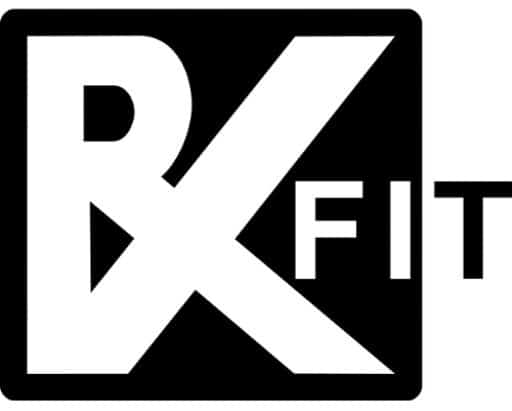They say that all good things must come in moderation, and that’s true for everything from eating a decadent slice of cake to hitting the gym for a sweat-inducing workout. Just like a delicate balancing act, finding the right amount of anything requires precision and a steady hand.
Much like a tightrope walker, we must take measured steps and avoid going too far in either direction, lest we fall off and lose our balance. So let’s explore how to find the right balance when it comes to gym frequency and duration, and how to walk the tightrope of fitness success.
Understanding Gym Frequency
Gym frequency refers to how often you go to the gym per week.
How Often Should You Go to the Gym?
Knowing how often should you go to the gym or the number of times you should go to the gym per week depends on several factors. Generally, for optimal results, most people should aim to work out at least three to four times a week, whether it be for strength training sessions, weight loss training or both.
Factors to Consider in Determining Gym Frequency
1. Fitness Goals
Your fitness goals will determine how often you need to go to the gym. For example, if you’re looking to lose weight, you may need to work out more frequently than if you’re looking to build lean muscle mass.
2. Age
Age can impact how often you should go to the gym. Older adults may need to work out more frequently to maintain their health and fitness such as cardio and strength training.
3. Current Fitness Level
If you’re just starting, you may need to go to the gym more frequently to build up your fitness level.
4. Health Status
If you have a medical condition, you may need to work out more or less frequently depending on your doctor’s recommendations.
5. Availability
Your availability will also impact how often you can go to the gym. If you have a busy schedule, you may need to work out less frequently.
How to Develop a Workout Schedule Based on Your Gym Frequency
To develop a workout schedule based on your gym frequency, start by determining how many times per week you can really go to the gym. Then, plan your workouts around your fitness goals, ensuring that you’re incorporating a mix of strength training and cardio.
Kick Start Your Fitness Journey With Our Online Fitness Masterclass!
Understanding Gym Duration
Gym duration refers to how long you spend at the gym per session.
How Long Should You Be at the Gym?
The amount of time you should spend at the gym per session depends on several factors. Usually, most people should aim for a workout session of 45 minutes to an hour.
Factors to Consider in Determining Gym Duration
1. Fitness Goals
Your fitness goals will determine how long you need to work out. For example, if you’re looking to gain muscle while you lose weight, you may need to spend more time lifting weights.
2. Type of Workout
The type of workout you’re doing will also impact how long you need to spend at the gym. For example, a cardio workout may be shorter than a weightlifting workout.
3. Current Fitness Level
If you’re just starting, you may need to spend less time at the gym until your fitness level improves.
4. Time Availability
Your availability will impact how long you can spend at the gym per session.
5. Personal Preferences
Some people may prefer shorter or longer workouts based on their personal preferences.
How to Optimize Your Workout Based on Your Gym Duration
To optimize your workout based on your gym duration, focus on compound exercises that work multiple muscle groups simultaneously. Also, incorporate high-intensity interval training (HIIT) into your routine to maximize your results in a shorter amount of time.
Finding the Right Balance: Frequency and Duration
Finding the right balance between gym frequency and duration is crucial for achieving your fitness goals. Your workout schedule should be designed to maximize your gains while avoiding burnout and injury. Here are some tips for optimizing your gym frequency and duration:
- Incorporate both resistance training and cardio into your workout routine. Depending on your goals, you may want to focus more on one or the other, but both are important for overall fitness and health.
- Allow for proper recovery time between workouts. This means scheduling rest days and not overtraining a certain muscle group.
- Be realistic about the time you have available for working out. It’s better to be consistent with shorter workouts than to try to fit in long sessions that you can’t maintain over time.
How to Adjust Your Gym Frequency and Duration Based on Your Fitness Goals
Your fitness goals should guide your gym frequency and duration. If you’re trying to develop muscle growth, for example, you’ll need to work out more frequently and for longer periods than if you’re just trying to maintain your current fitness level. Here are some guidelines to help you adjust your gym schedule based on your goals:
- To build muscle: Aim for at least 3-4 workouts per week, with each session lasting 60-90 minutes.
- To lose weight: Aim for 4-5 cardio sessions per week, with each session lasting 30-60 minutes. Incorporate strength training 2-3 times per week, with each session lasting 30-60 minutes.
- General fitness and health: Aim for 3-4 workouts per week, with each session lasting 30-60 minutes.
The Importance of Recovery and Rest Days
Rest days are just as important as gym days. Giving your body time to recover and repair itself is crucial for avoiding and preventing injury. Rest days can be active, such as going for a walk or doing some gentle yoga, or completely sedentary. It’s important to listen to your body and not push yourself too hard, even on rest days.
Advanced Gym Frequency and Duration Strategies
If you’re looking to take your workouts to the next level, there are some advanced strategies you can incorporate into your gym frequency and duration plan.
Periodization
Periodization is a training method that involves breaking your workout routine into cycles, each with a specific goal. This helps prevent plateauing and ensures you’re making progress toward your overall fitness goals.
Training Splits
Training splits involve focusing on different muscle groups on different days. This allows you to target specific areas of your body more effectively and avoid overtraining.
Active Recovery and Deloading
Active recovery involves doing low-intensity workouts on rest days to help promote recovery and prevent muscle soreness. Deloading involves reducing the intensity and volume of your workouts for a period of time to allow for proper recovery.
Cross-Training and Alternative Activities
Cross-training involves incorporating different types of exercise into your routine, such as swimming or cycling, to prevent boredom and challenge your body in new ways.
Importance of Tracking Progress and Adjusting Frequency and Duration
Tracking your progress and adjusting your gym frequency and duration as needed are crucial for making progress toward your fitness goals. Use a workout journal or an app to track your workouts, and don’t be afraid to make adjustments if you’re not seeing the results you want.
Common Questions and Myths
1. How Many Times Should I Go to the Gym per Week?
The number of times you should go to the gym per week depends on your goals and schedule. Aim for at least 3-4 workouts per week, but don’t overdo it if you’re just starting out.
2. How Long Should I Be in the Gym per Session?
Aim for 30-60 minutes per session for general fitness and health. However, if you’re trying to build strength or endurance, you may need longer sessions. On the other hand, if you’re short on time, even a 20-minute workout can be effective.
3. Is It Bad To Work Out Every Day?
Working out every day can be beneficial for some people, but it’s important to listen to your body and give it time to recover. If you’re doing intense workouts every day without rest days, you may be putting yourself at risk for injury or dysfunction. It’s recommended to have at least 1-2 rest days per week.
4. Can I Work Out Too Much?
Yes, it’s possible to work out too much. Overtraining can lead to injuries, burnout, and a plateau in your progress. Make sure to give your body time to recover and vary your workouts to avoid overuse injuries.
5. Can I See Results With Just 30 Minutes at the Gym?
Absolutely! 30 minutes of focused and intense exercise can be just as effective as longer workouts. It’s all about the quality of your workout and making sure you’re pushing yourself to your limits.
6. What if I Can Only Go to the Gym a Few Times a Week?
That’s okay! Even just 2-3 workouts per week can be effective if you’re consistent and make the most of your time. Just make sure to focus on compound exercises and vary your workouts to make the most of your limited time.
7. How Do I Avoid Burnout or Plateauing?
To avoid burnout or plateauing, make sure to vary your workouts and incorporate different types of exercises. Listen to your body and take rest days when needed. It’s also important to set realistic goals and track your progress to stay motivated. Finally, don’t be afraid to switch up your routine or seek the guidance of a personal trainer if you feel like you’re stuck in a rut.
Final Thoughts
The frequency and duration of your gym workouts should be based on your individual goals, schedule, and fitness level. It’s important to find the right balance between the two to avoid overtraining or burnout. Remember to prioritize rest and recovery, and adjust your workout schedule as needed to continue making progress.
If you’re looking for personalized guidance and support in your fitness journey, consider working with a mobile personal trainer like RxFit in Austin Texas. We can help you create a workout plan tailored to your specific needs and goals, and provide motivation and accountability along the way.


